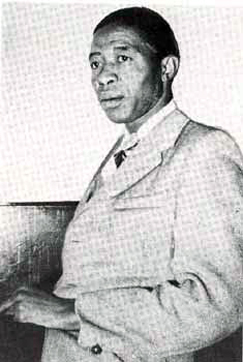Arts and culture
South African literature: the 1940s
HIE Dlomo, Peter Abrahams
The 1940s saw the beginnings of a flowering of literature by black South Africans such as HIE Dhlomo whose work preached a "return to the source" - the wisdom of finding traditional ways of dealing with modern problems. His work includes several plays and the long poem The Valley of a Thousand Hills (1941). Poets such as BW Vilakazi, who wrote in Zulu, gave new literary life to their indigenous languages. Peter Abrahams, a writer of mixed race descent, published his first novel Mine Boy in 1946, the same year a large miners’ strike was violently suppressed by Smuts’ government. Mine Boy depicts life in black urban areas of the time, and dramatises the problems of rural people in a depressed urban environment - a theme that was referred to as the "Jim comes to Jo’burg" phenomenon in South African literature. Later works by Abrahams (who left South Africa and settled in Britain before finally moving to Jamaica) include The Path of Thunder (1948), which deals with interracial love; Return to Goli (1953), about his journey back to report on life in Johannesburg; and his autobiography Tell Freedom (1954).Herman Charles Bosman
Another South African writer who emerged in the 1940s, Herman Charles Bosman, is best known for his tales, a portrait of Afrikaner storytelling skills and social attitudes. The first collection of stories was published in Mafeking Road in 1947. Among the most famous are Unto Dust and In the Withaak’s Shade. Bosman, who was once jailed for the mysterious murder of his half-brother, also wrote poetry, novels, and much journalism, often satirical. One of his best works, Cold Stone Jug (1949), is a semi-fictionalised account of his time in jail. All his books were reissued in new 2001 editions to coincide with the 50th anniversary of his death.Alan Paton
Bosman had satirised social attitudes in South Africa, but it was the work of a former white schoolteacher, Alan Paton, that brought the world’s attention to the situation of black people in South Africa. Cry, The Beloved Country (1948) is possibly the most famous novel to have come out of South Africa. When it was first published, it was an international bestseller, launching Paton to worldwide fame. The novel put South Africa on the map of international politics by making visible to Western audiences the effects of racial prejudice and the oppression of black people. The novel was turned into a movie in 1995. It is the story of a black priest who travels to Johannesburg in search of his son, who had fallen victim to the corrupting influence of the city. The novel explores themes of corruption and forgiveness, putting forward a liberal-humanist view of South Africa’s racial politics - as well as Paton’s deeply felt Christianity. The novel has a lovely poetic language, with extensive use of Biblical cadences, though Paton has also been criticised for a possibly condescending portrayal of black people.The story continued ...
Would you like to use this article in your publication or on your website? See: Using SAinfo material

HIE Dhlomo looked to traditional ways to deal with modern problems


